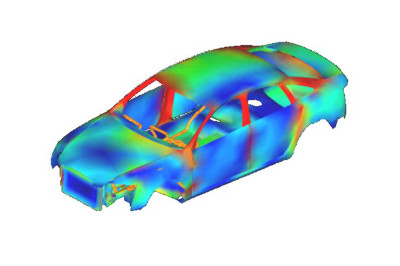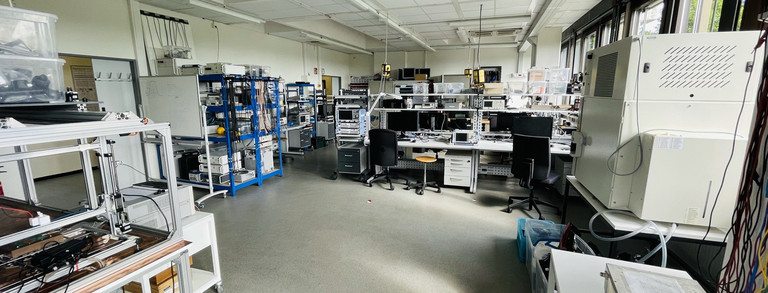Electromagnetic compatibility
Targets
Electromagnetic compatibility (EMC) considers the interference emission and immunity of electronic systems and is essential for the reliability of automotive electronics. The functionality of vehicle components can be severely impaired by mutual electromagnetic interference. In the worst case, system failures can occur. Therefore, the EMC behavior of all components must be ensured by special analyses and tests.

The functionality of individual ICs and electronic systems under electromagnetic influence can be ensured by measurements and, in part, virtually by simulations. The interference emission behavior can also be determined by measurement and, in part, by simulation. 3D field and circuit simulations are used for the simulation.
Within different research projects, which are usually carried out with industrial partners, methods for the determination of the EMC behavior of electronic single components up to complete automotive systems are developed. Topics are:
- Modeling of immunity tests for ICs and systems
- Modeling of EMC behavior of ICs and systems
- Field scan methods for determining the interference emission of components and systems
- Development of new EMC measurement methods
Methods
Interference immunity
Methods for modeling the immunity of various typical automotive components have been developed. Using BCI and DPI models, EMC behavior can be predicted by simulations.
Interference emission
Field scan techniques can be used to obtain much more information about an interfering system than conventional field measurements at a single point. Special methods are being developed especially for automotive applications. The correction of inaccurate and noisy measurement data as well as the acceleration of measurements by field scan methods are in the foreground.
In addition to scanning methods, fast methods for calculating the radiation of lines form an important area of research.

